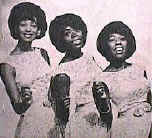Balanchine's Birthday
Today seems an appropriate day to celebrate Apollo and the nine Muses.
From a website on Balanchine's and Stravinsky's ballet, "Apollon Musagete":
In his Poetics of Music (1942) Stravinsky says: "Summing up: What is important for the lucid ordering of the work– for its crystallization– is that all the Dionysian elements which set the imagination of the artist in motion and make the life-sap rise must be properly subjugated before they intoxicate us, and must finally be made to submit to the law: Apollo demands it." Stravinsky conceived Apollo as a ballet blanc– a "white ballet" with classical choreography and monochromatic attire. Envisioning the work in his mind's eye, he found that "the absence of many-colored hues and of all superfluities produced a wonderful freshness." Upon first hearing Apollo, Diaghilev found it "music somehow not of this world, but from somewhere else above." The ballet closes with an Apotheosis in which Apollo leads the Muses towards Parnassus. Here, the gravely beautiful music with which the work began is truly recapitulated "on high"– ceaselessly recycled, frozen in time.
— Joseph Horowitz
Another website invoking Apollo:
The icon that I use… is the nine-fold square…. The nine-fold square has centre, periphery, axes and diagonals. But all are present only in their bare essentials. It is also a sequence of eight triads. Four pass through the centre and four do not. This is the garden of Apollo, the field of Reason….
In accordance with these remarks, here is the underlying structure for a ballet blanc:

This structure may seem too simple to support movements of interest, but consider the following (click to enlarge):
As Sir Arthur Quiller-Couch, paraphrasing Horace, remarks in his Whitsun, 1939, preface to the new edition of the Oxford Book of English Verse, "tamen usque recurret Apollo."
The alert reader will note that in the above diagrams, only eight of the positions move.
Which muse remains at the center?
Consider the remark of T. S. Eliot, "At the still point, there the dance is," and the fact that on the day Eliot turned 60, Olivia Newton-John was born. How, indeed, in the words of another "sixty-year-old smiling public man," can we know the dancer from the dance?



